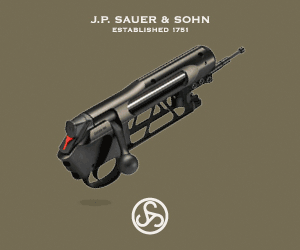Hier mal ein paar interessante Aussagen zum Thema Objektivdurchmesser bei Zielfernrohren. Quelle ist die Homepage der Fa. Leupold:
There is virtually no difference in light transmission between a 40mm and a 50mm objective diameter. This holds true for any size objective.
How often have you heard someone say " I want the scope that 'gathers' the most light." Chances are fairly often. Many people seem to think that large objective scopes "gather" more light and therefore provide a brighter image of the target to the shooter. Logical? Yes. Correct? No. The key to a scope providing a bright image to the shooter is not how much light it "gathers" but how much useable light it transmits. "Gathers, transmits, what's the difference?" Quite a lot, actually. First of all, rifle scope do not "gather" light, they transmit it. Yes, large objective scopes allow more light to enter the scope, but that by itself does not guarantee that the image will be any brighter than a smaller objective scope's. What happens to light while it is being transmitted through the scope is what determines the brightness of the image. So, just what makes one rifle scope transmit more useable light than another? Basically, the lenses focus the light into a beam. Light transmission is how well this beam travels from one end of the scope to the other. Three things determine how well this is done: the glass used in the lenses, anti-reflective lens coatings, and the use of the lenses in the scope. Glass is a tricky substance. It can do a variety of things to light, including reflect it and absorb it. It can also distort images when you look through it. You might think that glass is just glass, but there are many different things that can go into glass when it is made, all of which cause it to affect light in different ways. The trick is for an optical engineer to choose the right type of glass for each lens in the scope that will allow the most light to pass through without reflecting or absorbing too much of it. Next is lens coating. It is simply a rule of physics that any time light passes through any glass lens, regardless of how perfectly chosen it is, some of that light will not make it out the other side. Some light is simply reflected off the surface, some more is scattered within the lens and comes out at odd angles. A high quality, anti-reflective lens coating, such as Multicoat 4, helps to ensure that as much light passes through as possible without being lost. Finally, there is the use of the lenses in the scope. There are many internal lenses in a single scope. Each has a different purpose. Some magnify while others clarify and correct the image. Just as in life, everything is a trade-off. You can use a great number of lenses and get a terrific image but it will not be that bright. You can also use only a few lenses and have an incredibly bright image that is very unclear. As we said earlier, every lens through which light passes decreases its brightness. But if you have too few lenses, the image will not be clear. The solution is for the engineers to determine the minimum number of lenses nessessary to ensure a bright and clear image. So let's review: Scopes do not "gather" light they transmit it. Light transmission is very important to obtaining a bright image. To ensure a high light transmission, the scope needs the correct type of glass, an ati-reflective lens coating and ideal lens usage. Of course, there are many more complex aspects to the matter, but without these three elements, further efforts to increase light transmission will be useless.











